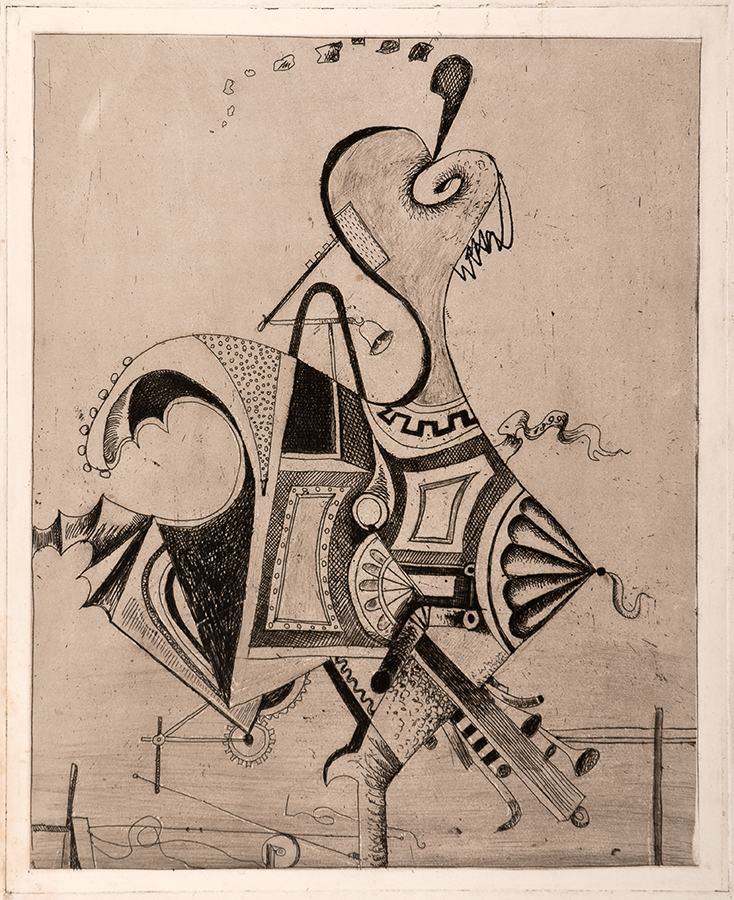From Dada to Dalí: Surrealist Works on Paper
January 12 - May 8, 2016
The Dada movement arose in reaction to the senseless destruction of World War I. First practiced, and named, in 1916 by writers and artists working in Zürich—among them Jean Arp, Hugo Ball, and Tristan Tzara—the idea soon developed independently in Berlin, Paris, and New York. The groups were united not so much in style or technique as in their rejection of convention and rationalism. The name Dada, French for “hobbyhorse” and derived, some say, by randomly stabbing a French-German dictionary with a penknife, fittingly denotes Dada’s nonsensical and decidedly anti-art propensities.
Surrealism evolved out of the Dada aesthetic but rejected Dada’s preference for absurdity and adopted instead a more programmed direction in its effort to combat rationalism. Influenced by the psychoanalytical work of Sigmund Freud, the Surrealists, including André Breton, Man Ray, André Masson, and Salvador Dalí, employed a variety of techniques, in particular, automatic writing and drawing, as a means of expressing the subconscious mind.
From Dada to Dalí, which featured about forty prints, drawings, and texts by Surrealist and Dada artists and writers, was organized in tandem with the April 2016 Center for the Performing Arts presentation of Daniele Finzi Pasca’s La Verità, a theatrical examination of the life and work of Salvador Dalí.
Organized by the Palmer Museum of Art.
